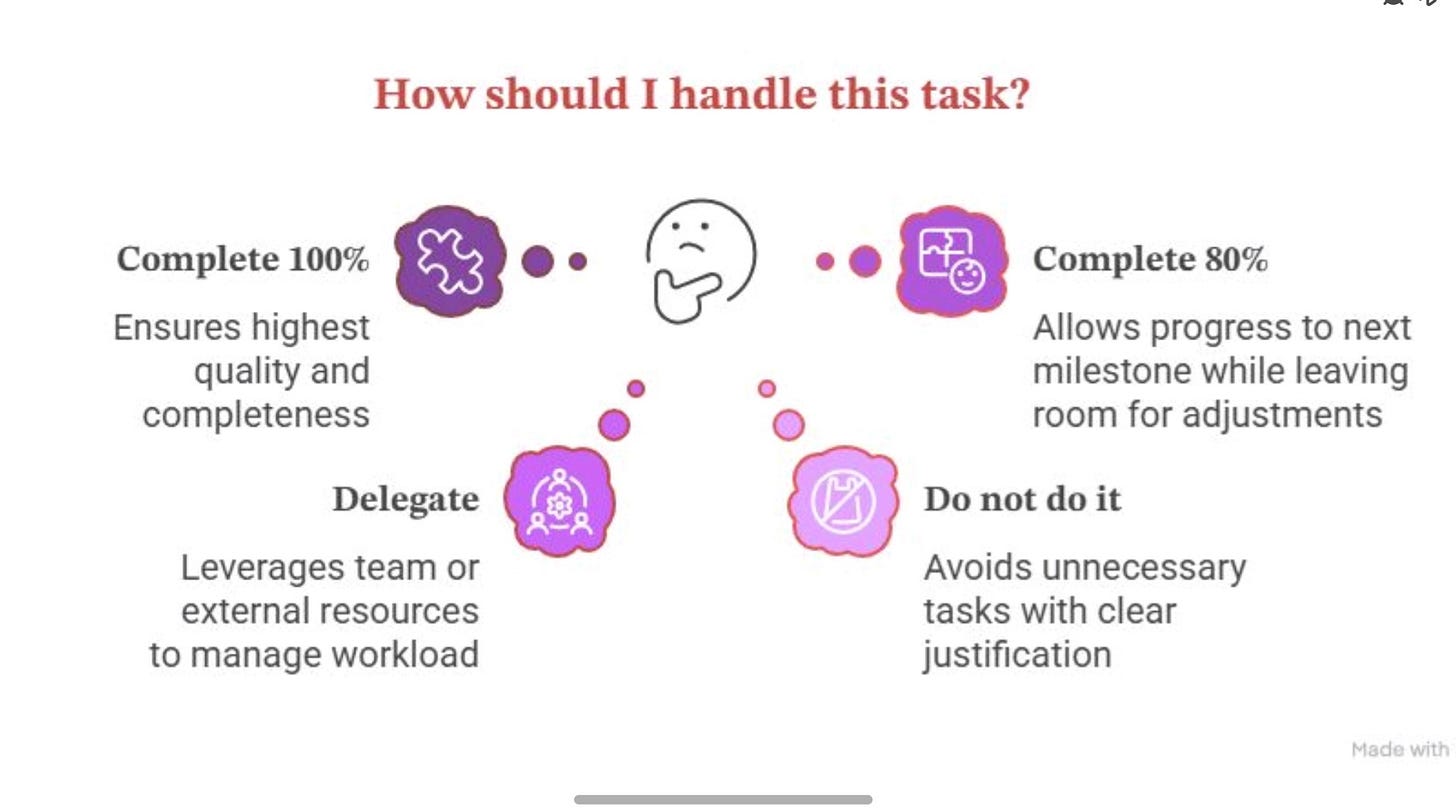A reoccuring theme with my coaching clients at the moment is Prioritisation.
At Amazon, the workload was relentless. The pace was fast, expectations were high, and there was never a day when you crossed everything off your to-do list and in order to survive you needed a process to filter through the assigned tasks and projects.
This is decision framework I use when a task or project comea across my desk.
1️⃣ Do it 100% of the way: If it’s high-impact and absolutely requires to be done to a high standard, commit fully and get it done. (Hint: Rarely do all projects / tasks that are given to you require this. See #2)
2️⃣ Do it 80% of the way: This was one of the most underutilised strategies. In a fast-paced environment, 80% is often good enough to keep things moving. You can refine later if needed. (Note: You need to be upfront with this to your manager on why you believe that 20% can be tackled later if needed.)
3️⃣ Delegate: Do you need to do this, or is someone else better suited? If you don’t have a team, can you offshore or automate?
4️⃣ Don’t do it: The hardest one, but often the smartest, and the option most junior people don't think of. You can’t say yes to everything. If priorities clash, have a clear conversation with your manager: “If I take this on, I’ll need to drop X. Which should I focus on?”
In high-pressure roles knowing how to prioritise is everything. It not only helps you but it will also help you gain respect by leadership; being the person on the team that can move faster, deliver results, and ruthlessly prioritise. Try these tips to avoid drowning in unnecessary work.


